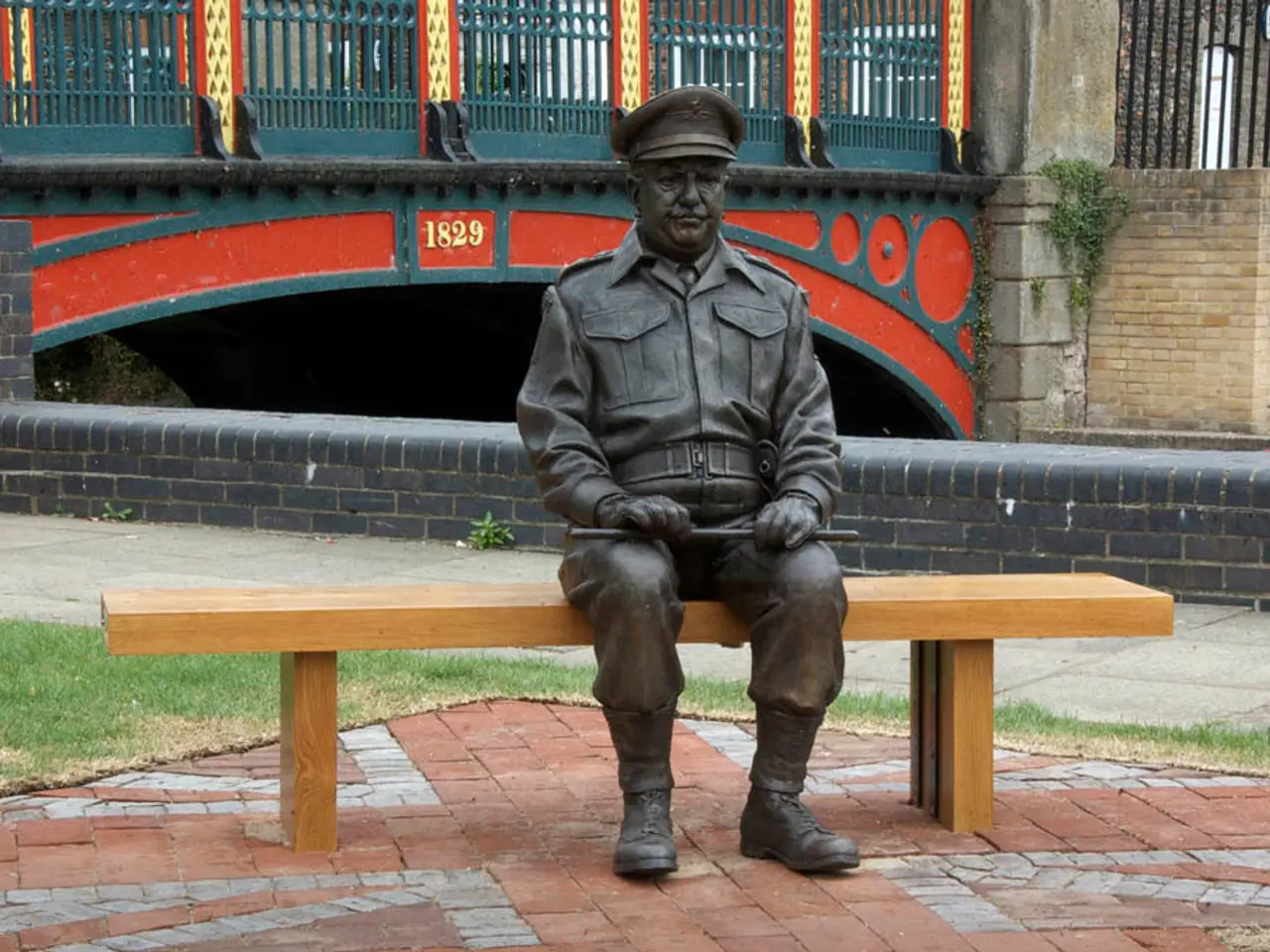Clock Analysis: Seth Thomas Column and Molding Clock Profiles
Welcome back to another edition of Tick-Talk Tuesday, where we delve into the fascinating world of clocks and address readers' questions and issues. Today, we're taking a closer look at a Seth Thomas column and cornice clock, a timepiece that's not only a testament to American craftsmanship but also an emblem of cross-border trade in the mid-19th century.
The Seth Thomas Clock Company
Founded by Seth Thomas in 1813, the Seth Thomas Clock Company grew to become one of the leading American clock manufacturers. Known for introducing mass production techniques and making clocks more affordable, the company produced a variety of mantle and shelf clocks during the mid-19th century, with the column and cornice style being particularly popular.
Design and Features of Column and Cornice Clocks
Characterized by vertical columns on either side of the clock case and a decorative cornice or projecting molded top, these clocks often had wooden cases made of mahogany or other fine woods, sometimes with veneer and inlays. Typically, they featured an 8-day movement with striking mechanisms, and the dials were usually painted wood or metal, often with decorative artwork.
Historical and Cultural Significance (1841–1867)
This period captures the early to mid-industrial era when clocks shifted from luxury items to common household necessities. Column and cornice clocks symbolize the democratization of timekeeping through mass production, illustrating 19th-century American woodworking and clockmaking craftsmanship. Their distribution in Canada West (now Ontario) and other parts of British North America helped synchronize social and economic life in rapidly developing regions.
Connection with the R.W. Paterson Company of Canada West
The R.W. Paterson Company was an important Canadian retailer and agent based in Canada West (modern-day Ontario). Paterson acted as a distributor or vendor for Seth Thomas clocks, helping introduce American-made timepieces into Canadian households. This relationship illustrates early cross-border trade in consumer goods, showing how American industrial products were integrated into Canadian markets.
The Antique Seth Thomas Column and Cornice Clock
Our focus today is a Seth Thomas column and cornice clock, likely made between 1841 and 1867, as Canada West was the name of the region before it became Ontario under Confederation. The clock is a Seth Thomas time and strike eight-day weight-driven column and cornice clock, with an "Empire" style.
The clock stands 32'' tall, 18'' wide, and 5'' deep. Its upper tablet features a hand-painted fruit bowl framed within a clear rectangular section with an onion top surround by a gold laurel design. The lower tablet shows a headless eagle framed in an clear oval centre with clustered gold berry spandrels in all 4 corners and encircling the oval section is a gold wreath made of berries and leaves.
Both the upper and lower tablets of this antique American clock appear to be original and in very good condition. The painted tin Roman Numeral dial has hand-decorated flower spandrels in all four corners. The hour and minute hands are in an Ogee style and original to the clock. The movement is clean and running well.
Collectibility and Legacy
Seth Thomas column and cornice clocks from this period are prized by antique collectors for their historical value, craftsmanship, and aesthetic appeal. The association with R.W. Paterson adds a layer of Canadian historical importance. Many examples survive in museums and private collections, representing a tangible link to 19th-century life on both sides of the U.S.–Canada border.
In conclusion, the Seth Thomas column and cornice clock is a remarkable piece of American and Canadian history, embodying the spirit of industrial growth and cross-border trade during the mid-19th century. We hope you've enjoyed this journey through time and join us next week for another Tick-Talk Tuesday!
- Vintage clocks, specifically Seth Thomas column and cornice clocks, have a rich history, dating back to their introduction by Seth Thomas in 1813.
- Clock enthusiasts appreciate these timepieces for their historical value, craftsmanship, and aesthetic appeal.
- Lifestyle magazines might feature stories on collecting antique Seth Thomas column and cornice clocks, exploring their history and appeal.
- Fashion-and-beauty blogs could showcase room decor ideas that include these classic clocks as a focal point.
- Food-and-drink articles might discuss hosting vintage-themed parties where Seth Thomas column and cornice clocks serve as elegant décor.
- Home-and-garden articles could offer advice on refurbishing or maintaining antique Seth Thomas clocks as part of a DIY renovation project.
- In the realm of relationships, couples might consider these clocks as unique, sentimental gift ideas.
- Pets may be seen in photos alongside these historically significant clocks, adding a touch of charm to pet-themed posts on social media.
- Travel blogs might share stories of exploring museums that house collections of Seth Thomas column and cornice clocks.
- Car enthusiasts might find articles discussing connections between the transportation industry and Seth Thomas clock production during the mid-19th century.
- Bookworms could discover books about American clock manufacturing history, including discussions on the development of the Seth Thomas Clock Company.
- Education-and-self-development websites might offer online courses on the history, craftsmanship, and identification of antique Seth Thomas clocks.
- Personal-growth sites might incorporate themes related to time management and appreciating traditions using antique clocks like the Seth Thomas column and cornice clock.
- Shopping guides could suggest retailers specializing in antique clocks and offer tips on purchasing and caring for vintage Seth Thomas clocks.
- Entertainment journalists might cover popular culture events where vintage clocks, including Seth Thomas column and cornice clocks, are incorporated as prop or decoration.




